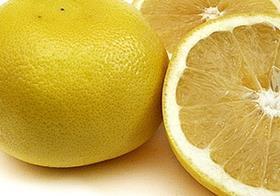
The future of South Africa's citrus export business in Europe remains very much in the balance, after the European Food Safety Authority recommended that authorities continue to employ and enforce existing measures designed to prevent the establishment of fungal disease Phyllosticta citricarpa (citrus black spot) in the EU.
Last year, South Africa was warned it would face an import ban in Europe if inspectors found more than five cases of citrus black spot; in the end, more than 30 interceptions were made, but it was only by the very tail-end of the season that a temporary and, effectively, symbolic blockade was imposed.
The European Commission will now have to decide if it is prepared to enforce those existing measures fully in 2014 and whether or not it is ready to declare a ban while fruit is on the water. Such a decision should be taken at an upcoming meeting of its DG Sanco standing committee on plant health.
In its much-anticipated, revised pest risk assessment, EFSA said existing phytosanitary measures were effective in reducing the risk of citrus black spot and also citrus canker being introduced to the region.
'Both pathogens present a risk to the EU citrus industry because host plants are present in Europe and the environmental conditions are favourable,' it found. 'Neither is currently found in the EU and both are subject to control measures preventing their entry into the region.'
Explaining its findings, it said the report's expert authors felt there was a risk that citrus black spot could enter the EU on imported citrus (without leaves) and because spores produced on fruit peel 'can be dispersed by rain splash'. The only exception, it said, was Tahiti limes.
'There is a risk that, following entry, P citricarpa would establish and spread in the endangered citrus growing areas of the EU,' the report continued. 'Simulation models indicate that P citricarpa would develop in EU citrus-growing areas in late summer to autumn and to a lesser extent in late spring to early summer.'
The Panel considers the current EU phytosanitary measures – if correctly implemented – to be effective in reducing the risk of P. citricarpa being introduced to the region.
Concerned but prepared
Responding to the report, Justin Chadwick of the South African Citrus Growers' Association said EFSA had 'set the scene' for what would be required of the country's suppliers this year.
'It is not what the industry would have hoped for, but is nonetheless something we have anticipated and have prepared for,' he commented. 'We note this report and will give it the careful consideration it deserves.'
He added: 'The industry is committed and ready to comply with the EU's import requirements. Cognisant of the importance and impact of this report, the industry has already prepared the 2014 crop in anticipation and is fully prepared to continue supplying the citrus fruit that European consumers desire, in total compliance with EU plant health regulations.'
Hinting at the possible commissioning of further scientific research, Chadwick was at pains to underline the CGA's respect for the European position and declined to offer a more comprehensive reaction.
Non-European citrus suppliers including South Africa have previously turned to the scientific community for help in assessing the risks involved.
Last October, a report compiled in Florida and written by leading authorities on citrus black spot based in Argentina, Australia, Brazil, South Africa and the US said the disease could not establish in the EU, effectively rubbishing claims made by European producers that imported citrus from South Africa posed a serious threat to the continent's own crop.
In the meantime, Chadwick concluded, the South African citrus export trade was prepared to do all it could to maintain a healthy relationship with what remains a hugely important market.
'We will also continue our engagement with all parties to ensure that the highly successful trade that has been maintained with Europe for more than a century continues without interruption. We will do so in a way that is compliant with the regulations of the importing country and is to the satisfaction of all parties involved, including those within Europe who have expressed concerns.
'None of this can be achieved without the close assistance of and partnership with the South African government. We will continue working hand-in-hand with the Department of Agriculture, Forestry and Fisheries as well as with the Department of Trade and Industry to meet the EU's requirements.'



